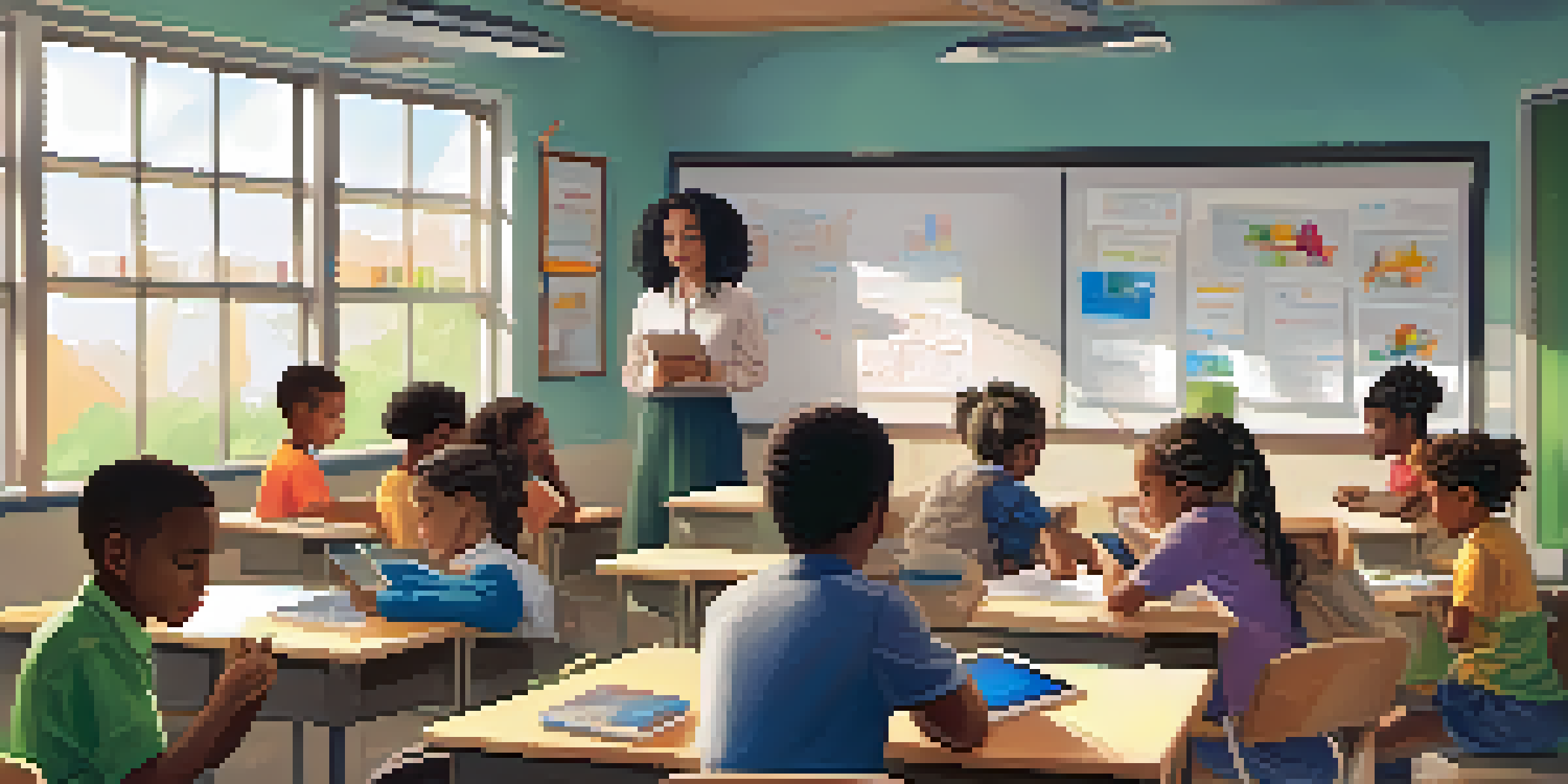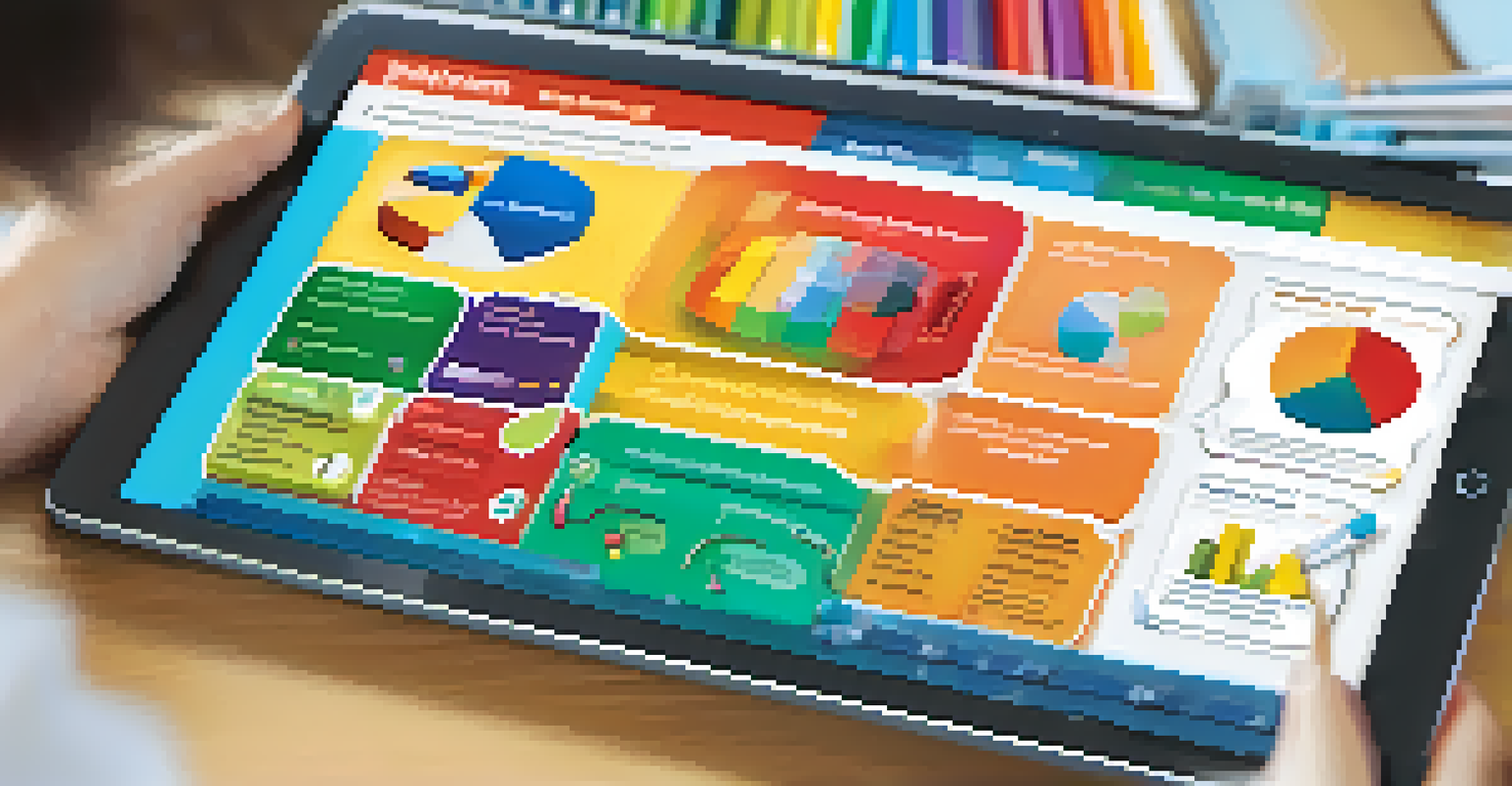Enhancing Teacher-Student Communication via Digital Assessments

The Importance of Communication in Education
Effective communication between teachers and students is crucial for a successful learning experience. When students feel comfortable expressing their thoughts, it leads to better engagement and understanding of the material. Conversely, teachers who communicate clearly can provide more targeted support, enhancing student performance.
The art of communication is the language of leadership.
In traditional settings, misunderstandings can easily arise due to limited interaction. Digital assessments can bridge this gap by allowing students to share their feedback and questions in real-time. This immediate exchange fosters an environment where learning can thrive, as both parties can adapt and respond quickly.
Ultimately, strong communication lays the foundation for a positive educational environment. By leveraging digital tools, teachers can create a more inclusive atmosphere where every student feels heard and valued, leading to improved academic outcomes.
How Digital Assessments Facilitate Feedback
Digital assessments allow for quick and efficient feedback loops between teachers and students. Instead of waiting days for grades to be returned, students can receive instant insights into their performance. This immediacy encourages them to reflect on their work while the material is still fresh in their minds.

Moreover, digital platforms often provide analytics that highlight trends in a student's understanding. For example, if multiple students struggle with a particular question, a teacher can address that topic in class promptly. This data-driven approach ensures that instruction is aligned with students' needs.
Effective Communication Boosts Learning
Clear communication between teachers and students enhances engagement and understanding, leading to better academic outcomes.
By making feedback more accessible, digital assessments empower students to take charge of their learning. They can track their progress over time, identify areas for improvement, and celebrate their successes, fostering a growth mindset that is essential in education.
Creating a Safe Space for Student Expression
One of the significant advantages of digital assessments is the comfort they provide for student expression. Many students feel shy or anxious speaking up in a classroom setting, but online platforms allow them to share their thoughts without the fear of judgment. This anonymity can lead to more honest and open communication.
Feedback is the breakfast of champions.
For instance, a student might feel more comfortable asking a question about a complex topic in a digital forum than in front of their peers. This increased willingness to engage can lead to deeper discussions and a richer learning experience. Teachers can then address these questions in a way that resonates with all students.
Creating a safe space for expression is essential for fostering a collaborative classroom environment. When students feel secure in sharing their ideas, they are more likely to contribute actively, enhancing the overall classroom dynamic.
Leveraging Multimedia for More Engaging Assessments
Digital assessments can incorporate various multimedia elements, making them more engaging for students. Instead of relying solely on text-based questions, teachers can include videos, interactive quizzes, and audio recordings that cater to different learning styles. This variety keeps students interested and stimulated.
For example, a science teacher might use a short video explaining a complex concept, followed by an interactive quiz that tests comprehension. Such multimedia approaches not only enhance understanding but also make assessments feel less daunting. Students are likely to engage more when they see a fun and dynamic format.
Digital Tools Personalize Education
Using data from digital assessments allows teachers to tailor learning experiences to meet individual student needs.
Incorporating multimedia into assessments also allows teachers to assess students' understanding in innovative ways. It pushes the boundaries of traditional evaluation methods, paving the way for a more comprehensive understanding of student learning.
Building Community Through Collaborative Learning
Digital assessments can promote collaborative learning, which significantly enhances communication among students. Platforms that allow group work enable students to discuss and solve problems together, fostering a sense of community. This collaboration not only improves understanding but also builds important social skills.
When students work in groups to complete digital assessments, they learn to articulate their thoughts and listen to others. This exchange of ideas can lead to richer discussions and a more profound grasp of the subject matter. Teachers can observe these interactions and provide guidance where necessary, enhancing the learning experience.
Creating a community through collaborative learning helps students feel more connected to their peers and their education. By working together, they develop a support system that can enhance motivation and engagement in the classroom.
Using Data to Personalize Learning Experiences
One of the most powerful aspects of digital assessments is the data they generate. Teachers can analyze this data to identify trends and personalize learning experiences for each student. By understanding individual strengths and weaknesses, educators can tailor their teaching strategies accordingly.
For instance, if a student consistently struggles with a particular topic, the teacher can provide additional resources or targeted support. This personalized approach ensures that no student is left behind, allowing them to progress at their own pace. It transforms education from a one-size-fits-all model to a more customized experience.
Collaboration Enhances Classroom Community
Group work through digital assessments fosters communication and builds a sense of community among students.
Personalizing learning experiences through data not only helps students excel academically but also boosts their confidence. When students see that their unique needs are being addressed, they are more likely to stay motivated and engaged.
Overcoming Challenges in Digital Communication
While digital assessments offer many benefits, they also come with challenges. Technical issues, such as connectivity problems or platform glitches, can hinder effective communication. Teachers and students must be prepared to navigate these challenges to ensure a smooth experience.
Additionally, not all students may have equal access to technology. This disparity can create barriers to effective communication and learning. Schools must work to provide resources and support for those who might struggle with technology to ensure inclusivity.

By acknowledging and addressing these challenges head-on, educators can create a more effective digital communication environment. It’s about being adaptable and resourceful, ensuring that every student has the opportunity to thrive in a digital learning landscape.